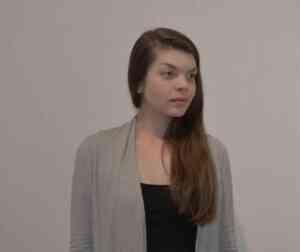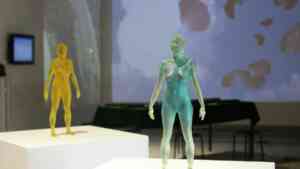The Computer Herself — From Digits to Proxies
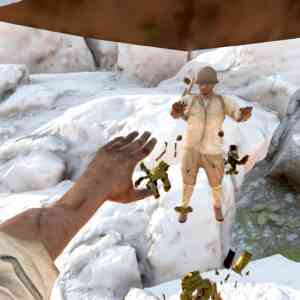
The precondition for creating digital art is the availability of an apparatus (Gestell) that can calculate digits and be used to design, create, or even conceive of works of art. Currently the word “computer” colloquially denotes a certain type of machine that is capable of determining a number of things by calculation.
This hasn’t always been the case. From the nineteenth century through the Second World War and after, even up until the 1970s, the word was used to describe a profession. At a time when machines couldn’t tidy up numbers themselves, the job of computing alighted among women’s employment opportunities, since it was too cumbersome and poorly paid for male engineers. Etymology thus points straight toward a systemic inequality, and validates the assumption that if the modus operandi of the art world has been crying out for gender equity in recent decades, the field of information technology has been howling. At the intersection of gender and technology, the exhibition Computer Grrls, presented at HMKV – Hartware MedienKunstVerein and at La Gaîté Lyrique in 2018–19, curated by Inke Arns and Marie Lechner, elaborated on their complex relationship through various artistic positions.
If the word “computer” currently evokes the image of a machine, a lifeless metal apparatus, its extension as a network of computers implies a whole planetary-scale infrastructure—a stack, as Benjamin H. Bratton has put it1 —with underwater cables and data centers, swallowing significant amounts of resources. Computer production has vast social and ecological impacts. From rare earth mining to managing computer waste, the life cycle of the calculating machine influences the lives of even those who don’t intend to use them—although such people may already belong to a minority.
For decades computation has been called “ubiquitous,” an adjective that is hard to escalate stylistically, but not in reality. Computers are everywhere, and among many other applications since the late 1960s they have been used to generate imagery. From the outset, the fascination with these programmable machines in the artistic context was based on the fact that representational and non-representational images could be generated with them, and a set of these might add up to an entire virtual reality.
When the first computer art pioneers started to experiment with calculating machines and largely plotted computer-generated images, in many cases using self-built printers, the space that would be formed between representation and computation was yet to be determined. Early computer artists, like Vera Molnár, a cofounder of GRAV2, conceived a “Machine Imaginaire” to enable her “to produce combinations of forms never seen before, either in nature or in museums, to create unimaginable images.”3 Most computer art was geometric and at first sight abstract, so it did actually visualize the code it was based on even if it did not necessarily resemble reality as perceived by the naked eye.

In the series (Des)orders from 1974, Molnár created patterns of concentric squares disrupted in various ways in a seemingly random manner, producing a vibrating disorder in a geometrical structure. The title is a multifaceted word play in French between désordres (disorders) and des ordres (some orders) which also refers to the machine (“ordinateur”) that calculated the imagery.
Rhythmically appearing poetically altered sets of geometric shapes also characterize the film ENIGMA (1972) by the well-known computer artist Lillian Schwartz.
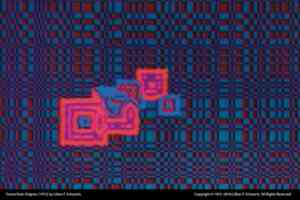
The film is currently on view at the Centre Pompidou in Paris, as part of the exhibition Women in Abstraction curated by Christine Macel. In its abstract imagery an invisible and unimaginable world may be encrypted—and cracked, just like the code of the legendary Enigma machine was cracked during the Second World War. Schwartz’s persistently vibrating rectangles, like structural film, are late successors of abstract film of the 1920s, but her computer animation has a painterly spin. Surprisingly, some analogue pieces of structural film from the era of ENIGMA are more suggestive of the earlier period’s monotonicity and purism, despite being created entirely by humans. Comparing ENIGMA with Józef Robakowski’s Dynamic Rectangle (1971), made without a computer’s aid, suggests that it was indeed the collaboration between artist and computer that enhanced geometric animation and pushed it towards visual complexity.
In general, the art worlds of the 1970s were skeptical of the computer’s artistic value. For decades computer art was a marginal business and, it must also be said, a game for only a few—those who could access large and expensive machinery before the ubiquity of computation. If access does still play a role, computers have become established tools in hands of artists, which doesn’t mean that some of them are not pioneers or early adaptors of the latest technologies.
In fact the computer can’t be described simply as a tool, since we know that it doesn’t only reverberate among but actually alter human cognitive processes. Thus its identity has shifted between object and subject in recent decades as information technology has developed—from women to apparatuses, and from calculating machines to entities capable of cognition and inductive logic.
Whether computers can actually choose a personal pronoun for themselves is still a question of the future. Artificial superintelligence—that is, an intellect that exceeds all the most capable human beings in reasoning, social engagement, or creative processes and experimentation—will eventually no longer feel the need to be addressed by humans, and won’t bother to answer our questions about the weather, song titles, or recipes—certainly not in the obsequious manner of Alexa and Siri, today’s best-known voice assistants. To personify these products of soft and hardware, and to constantly optimize their “cognitive” capabilities, tedious human groundwork is still required. Whether the low-paid parts of this work is predominantly done by women is not mentioned on the website Anatomy of an AI System, the collective project of Kate Crawford and Vladan Joler that describes the planetary-scale network behind the life cycle of Alexa. Many decades have passed since a person could be a computer, but the pattern of human exploitation in the service of creating mechanical infrastructure hasn’t greatly changed.
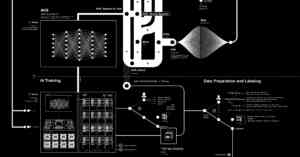
At least the already established infrastructure provides many of today’s artists with great freedom of expression, and in the case of virtual reality not only the mind but the body can roam freely in computer-generated worlds. While artists no longer need to build plotters themselves, they still require a complex skillset to create artwork in virtual reality. The reason this medium is worth that effort is its capability to fully engage sight and hearing, immersing the visitor while decoupling their senses from tangible reality.
Rachel Rossin, a New York-based artist who utilizes and intertwines multiple media in her work, including painting and VR, recently told Daniel Birnbaum that she repeatedly has chosen male avatars while playing computer games “for the sake of safety.”4 In one of her virtual reality experiences, Skinsuits (2019), Rossin placed participants wearing VR headsets into an abstract landscape, where the main action of each participant’s avatar is to continually shed its skin, revealing new layers of character skins underneath. As Rossin puts it in another interview: “Avatars as potential alter-egos make the VR experience feel somewhat diagnostic, as though in revealing a particular set of skins, the work tells participants something about themselves.”5

Using emerging technologies of representation in an artistic context is not without certain perils: attention is apt to steer towards the gear itself, leaving the intended message itself concealed. But if the artist navigates it well, VR can be a powerful medium capable of revealing potential dissonance between actual self and virtual counterpart—a proxy that is equally real except that it acts without the agency of matter, to adapt the definition of Katherine Hayles.6
Creating proxies that differ in gender from the viewer’s actual self is clearly not simply technological experimentation but a reflection of the roles and identities we need to play along with, and might optimally be able to change—if social and in some countries legislative burdens stop us from doing so in reality, then at least in virtuality. Virtual and real worlds are intertwined, even if our senses aren’t able to cope with perceiving both at the same time. The cognitive capacities of both humans and machines tie the two worlds together. And if we agree to take computers into account as actors, the question of whether computers are women or women computers loses its relevance—especially if woman and computer can collaborate in imagining, speculating, programing, and generating new realities.
- Sources:
- 1 Benjamin H. Bratton, The Stack: On Software and Sovereignty (Cambridge MA: The MIT Press, 2016).
- 2
GRAV (Groupe de Recherche d'Art Visuel) is the name of a Paris-based
collective of artists who conducted visual research between 1960 and
1968. Among their many exhibitions, they were actively involved in the New Tendencies exhibition series in Zagreb.
- 3 Frank Dietrich, “Visual Intelligence: The First Decade of Computer Art (1965–1975),” Leonardo 19, no. 2 (1986): 159–69.
- 4 Breaking Glass III – Virtual Space. Symposium on Virtual and Augmented Reality in Art and Architecture. https://breakingglass.staedelschule.de Dialogue of Rachel Rossin with Daniel Birnbaum.
- 5 Barbara London Calling Podcast Transcripts. https://www.barbaralondon.net/rachel-rossin/
- 6 N. Katherine Hayles, How We Became Posthuman: Virtual Bodies in Cybernetics, Literature, and Informatics, (Chicago, London: University of Chicago Press, 1999). http://thedigitalcommons.org/docs/hayles-posthuman-01.pdf
- Images:
- Vera Molnár, (Des)orders (1974), plotter drawing, ink on paper, 70 × 70 cm. Photo: https:// dam.org/museum/artists_ui/artists/molnar-vera/des-ordres/#lightbox[rel-13052-634720469]-1.
- Vladan Joler, Anatomy of an AI System (2018), detail. Courtesy the artist.
- Frame from the film ENIGMA (1972) by Lilian Schwartz. Image source: https://archive.transmediale.de/content/enigma.
- Rachel Rossin, Skinsuits (2019), a virtual reality experience. Photo: Courtesy the artist.
